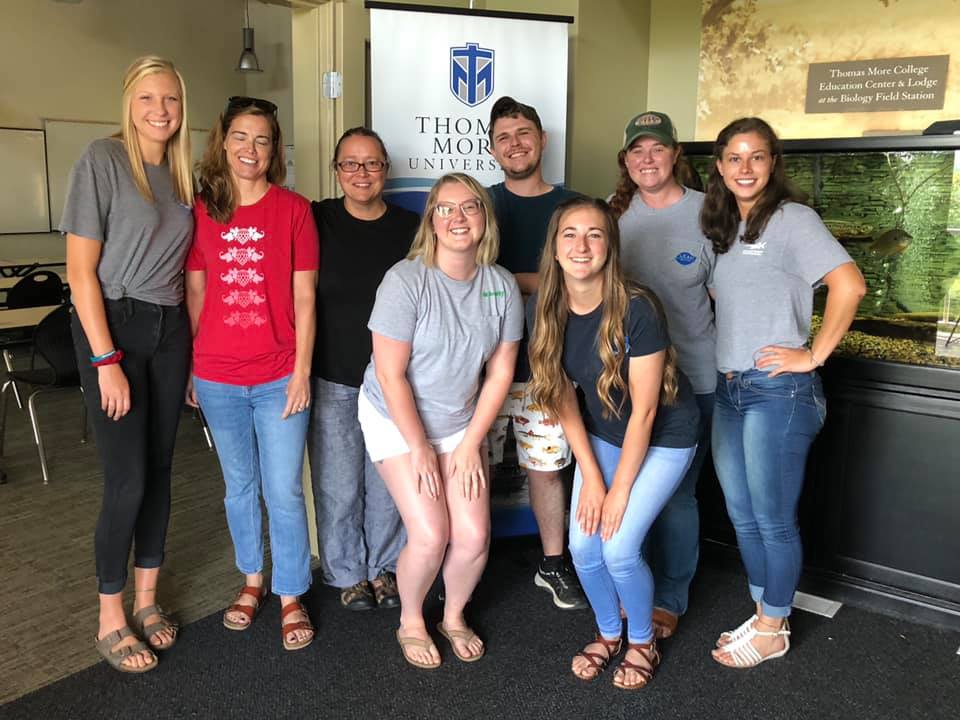Hello! Sadly, this will be my last post for the BCCDKY. Summer flies by and it’s back to hitting the books.
The second half of the summer internship consisted of LEAF Academy and research.
This year was the first camp we hosted for 13-15 year olds, and I would say it was a success. LEAF Academy was held by the BCCDKY and the Boone County Parks Department (which means we got to work with Kevin!) Both students and staff enjoyed learning about the environment and being surrounded by nature. The first day we took the kids on a Bioblitz through Middle Creek Park. A Bioblitz is similar to a hike, except, rather than simply enjoying the fresh air, we identify the different organisms that we see. This not only helps us to practice the important skill of identification, but also lets us know what lives and grows in the area. The rest of the week was filled with activities like snorkeling, orienteering, and even a field trip to Salato Wildlife Center. The kids (myself included) spent a bright morning learning how to fly fish – for some, it was their first time fishing. The kids, including some of the staff, expanded their knowledge and gained a deeper respect for the environment.
The other part of the summer was spent conducting research on the endangered Eastern Hellbender Salamander. Hellbenders are North America’s largest fully aquatic salamander, reaching up to 24 inches long. However, their populations have been drastically declining since the 1980s, by over 80%. Sources that threaten hellbenders include: pollution and alteration of waterways, sedimentation, anglers, and habitat destruction. My fantastic herp-loving partner, Kelli Hill, and I worked on the future head-start program at the Thomas More Biology Field Station. A head-start program, such as the one at the Columbus Zoo and Aquarium, obtains hellbenders as eggs, rears them until they are 2-3 years old, then releases them into the wild. Our project focused on characterizing the historic sites for hellbenders in Northern Kentucky to test the viability of repopulating those areas. Thus we began the search for potential reintroduction sites as part of the head-start program to increase wild population levels. We found that, of the three sites we analyzed, the third site had sufficient habitat best suited to hellbenders, in addition to being the least disturbed by anthropogenic activity. You can read more about my research here.
Here and there were some scattered events and programs. One warm afternoon we helped the awesome intern, Cayla, teach a homeschool group about invasive species. A different day we helped the KY State Nature Preserve post bat detectors in Boone County to observe which species are present. This past week we worked a booth at the county fair, which if you didn’t see it this year, it was the best booth there. True story.
In a way, the fair marks the end of the summer and also the end of my internship. I can say with full confidence that this was the best summer by far, all thanks to my folks at the BCCDKY, Boone County Parks, and SD1/TMU Field Station. They are not only great co-workers, but are also a great family. I am really going to miss everyone. I’ve learned so much and have grown more confident as a rising environmental scientist; they have inspired me to pursue the conservation/restoration field. For the next intern they take on: don’t worry, you’re in good hands. I also want to thank all the readers for taking their time to learn a little about me and this wonderful job. I hope you are as motivated as I am to conserve and protect our beautiful natural resources.
Best wishes,
Jessi Urichich


